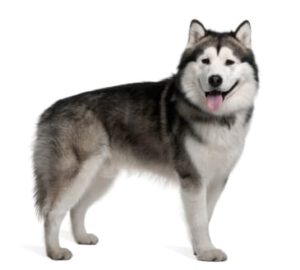
Watching the Olympics, I am awed by the athleticism of the contestants: they compete with strength, skill and coordination that I could hardly dream of possessing. Certainly hard work and determination has played a role in each athlete’s story, but probably good genes have also contributed to their success.
And if genetics plays a role in human athletics, it plays an even greater role in the success of animal athletes who are bred with performance in mind. Alaskan sled dogs were once just working dogs, but over the years have been carefully bred into a class of elite four-legged athletes.
Heather Huson and Elaine Ostrander from the National Institutes of Health (NIH) have lead a team of researchers from the NIH, the University of Alaska Fairbanks, and the University of California, Irvine to discover what makes a great dog athlete. Using the tools of modern genetics, they have addressed several questions. Are there genetic differences between sprinters and distance racers? Are there genetic differences between the “top dogs” and those that finish second? Their study’s findings were recently published in Mammaliam Genome.
![]() To date, more than 150 genes have been linked to different aspects of physical performance in humans. One of the clearest associations is seen with a gene called ACTN3 that is normally turned on in a type of muscle fiber used for power-based sports. A single SNP can turn this gene off. 23andMe customers can see their muscle performance report to see if they are more genetically predisposed to be a sprinter or a endurance athlete.
To date, more than 150 genes have been linked to different aspects of physical performance in humans. One of the clearest associations is seen with a gene called ACTN3 that is normally turned on in a type of muscle fiber used for power-based sports. A single SNP can turn this gene off. 23andMe customers can see their muscle performance report to see if they are more genetically predisposed to be a sprinter or a endurance athlete.
Not yet a customer? Visit our store or learn more.
Alaskan sled dogs do not belong to one pure breed, but rather are a blend of several different purebred breeds that were combined to optimize for strength, speed, and trainability. Using genetic ancestry analysis, the team of researchers were able to confirm that sprinter and long distance racer dogs have significant differences in their breed blends. Using purebred Alaskan malamute, Siberian huskies, German shorthaired pointers, and borzois for reference, they established that sprinter dogs have a considerably larger dose of German shorthaired pointer ancestry and long-distance race dogs have more Alaskan malamute and Siberian husky ancestry. The authors suggest that dogs with more husky ancestry have more “mental toughness,” a necessity for the long hauls, whereas dogs with more pointer ancestry may be easier to train and are more eager to please and perform.
Heather Huson:
Scientist and Sled-Dog Racer
Heather Huson, one of the leading researchers in this study, is a not only a scientist but also sled dog racing enthusiast. Having qualified for the US Olympic team twice, she comes at this research with first hand knowledge. You can read more about Huson’s accomplishments — both at the bench and on the snow here (downloadable pdf).
The researchers also did a genome-wide association study looking for genetic factors that influence heat tolerance in both sprinters and in long-distance racers. They found that seven SNPs within one gene — MYH9 — were associated with the ability to perform well even in the heat. The dog days of summer perhaps don’t feel so hot for these lucky pooches. There is a similar version of this gene in humans, but more research is needed to determine whether variation in this gene affects human heat tolerance.
As we watch the Olympics in London this summer, we won’t see any four-legged friends on the winner’s podium. Nevertheless, Alaskan sled dogs are tremendous athletes, and genetic studies such as this one may offer insights into the amazing athletic talents of those who actually will be on the podium.

Alaskan sled dogs are a mixture of many purebred breeds. Generally speaking, the relative amounts of these different breeds varies according the type of racing — sprinter dogs tend to have more German shorthaired pointer ancestry and long-distance race dogs often have more Alaskan malamute and Siberian husky ancestry.



